
Stockbyte/Stockbyte/Getty Images
It’s a shame to go to the supermarket and buy broccoli by the pound if you only eat the crowns. Broccoli stems or stalks, sometimes called "poor man's asparagus," are certainly edible and are good sources of fiber; vitamins A, C and K; folate; and calcium. With proper preparation, the stalks can make tasty additions to soups, stir-fries, pasta dishes and purées.
Go Green
When you choose broccoli, look for deeply colored heads. The leaves should be crisp. The stalks should be brightly colored and firm, with no cracks or brown spots. Don’t choose broccoli that has a woody stalk, as this is a sign of age. Older broccoli stalks are tough and difficult to eat.
Preparing the Stalk
Wash and cut broccoli as you normally would, but save the stalks. Trim the leaves from the stalk and cut off the end with a paring knife. Use a vegetable peeler to peel the tough outer layer, or cut off this layer with a paring knife. Then cut the stalk into small coin-shaped pieces or sticks.
Raw is Good
If you cut away enough of the tough outer layer, you can eat broccoli stalks raw. Serve raw stalks with your favorite dips as part of a crudité platter. If you find that the stalks taste too much like raw cabbage, blanch them in boiling water for about two minutes. This will keep them crisp while removing any offending flavor.
So is Cooked
Because of the high amount of cellulose in broccoli stalks, they stay firm for a long time during cooking. If you’re cooking both the florets and stalks, put the stalks in the water or steamer two minutes before you add the florets. Cook them both for an additional couple of minutes. This will give your stalks enough time to become tender, without turning your florets to mush. For purees -- such as a leek and broccoli puree with sour cream or creme fraiche -- pass cooked broccoli stalks through a food processor. If you're using the stalks in vegetable soup or in broccoli-cheese soup, let them simmer in your broth for at least 10 minutes.
Related Articles
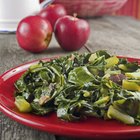
Should You Cook Collard Greens All at ...

How to Eliminate Bitterness in Broccoli
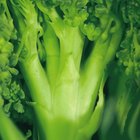
How to Perfectly Cook Broccoli
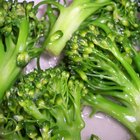
How to Steam Broccoli Without Making it ...
How to Clean and Cook Broccoli Rabe
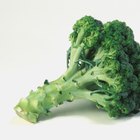
How to Cook Broccoli Stalks
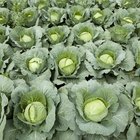
Nutritional Value of Cabbage
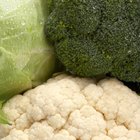
How to Steam Cauliflower & Broccoli
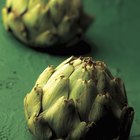
How to Parboil Artichokes
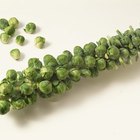
How to Cook Brussel Sprout Greens

How to Cook Fresh Turnip Greens

How to Juice a Daikon Radish

How to Cook Cauliflower Without ...
How to Roast Celery

How to Freeze Broccoli
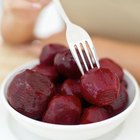
How to Boil Beetroot
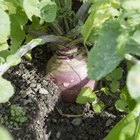
How to Cook Rutabaga in the Microwave

Steamed or Boiled Cauliflower
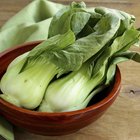
Bok Choy Nutrition
The Best Way to Cook Large Artichokes
References
- The New Complete Book of Food: A Nutritional, Medical, and Culinary Guide; Carol Ann Rinzler
- The New Food Lover's Tiptionary; Sharon T. Herbst
- Fine Cooking in Season: Your Guide to Choosing and Preparing the Season's Best; Fine Cooking Magazine
- 12 Best Foods Cookbook: Over 200 Recipes Featuring the 12 Healthiest Foods; Dana Jacobi
- On Food and Cooking: The Science and Lore of the Kitchen; Harold McGee
Writer Bio
Kat Black is a professional writer currently completing her doctorate in musicology/ She has won several prestigious awards for her research, and has had extensive training in classical music and dance.
Photo Credits
Stockbyte/Stockbyte/Getty Images